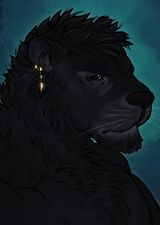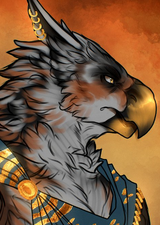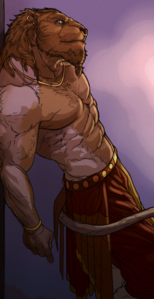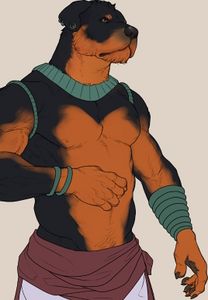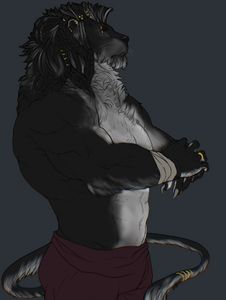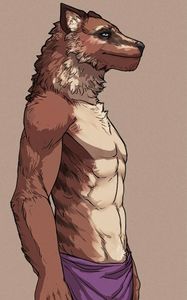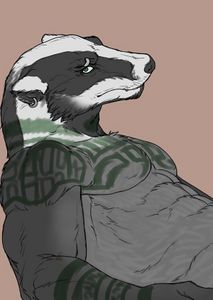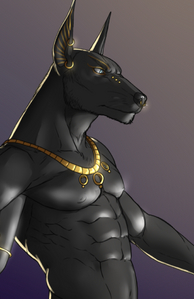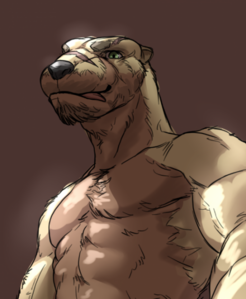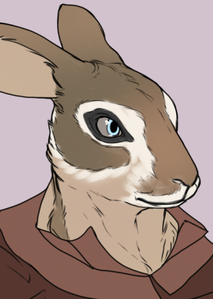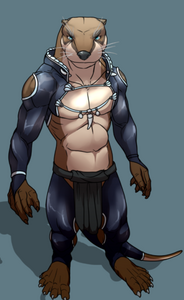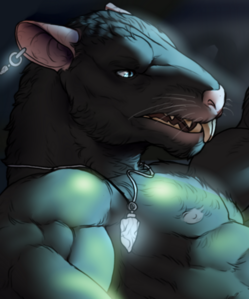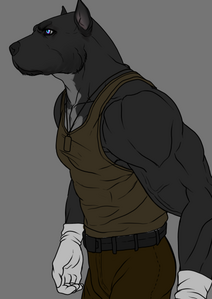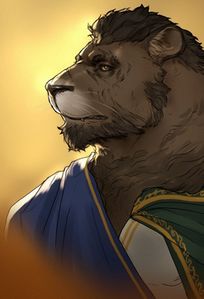More actions
No edit summary |
|||
| (82 intermediate revisions by 8 users not shown) | |||
| Line 1: | Line 1: | ||
{{Info | {{Info Lineage | ||
| | |name = Asha | ||
| | |test = Ankh-Sa (in Ibeth) | ||
| | |test2 = [[File:Ashaflafg.png|80px]] | ||
| | |test3 = '''Motto:''' "In Misery and Life, none left behind." | ||
|image = C1f01d9206ad2d5439fd5270c54b9356.png | |||
|state = The Ashal States | |||
|ruler = N/A | |||
|suzerain = N/A | |||
| | |languages = Ibeth, Common | ||
| | |religion = [[Khama]] | ||
|first_recorded = 20,000 BC | |||
| | |demonym = Ashal | ||
| | |||
| | |||
| | |||
|}} | |}} | ||
The Asha are the oldest continuously existing [[Heritage]] on [[Aloria]], even pre-dating the Elven [[Allorn Empire]], though has undergone massive changes throughout history. Under the early [[Dewamenet Empire]], the Asha were poised to conquer vast parts of the world, however, they came into conflict with the just-founded Allorn Empire. A cataclysmic war of Dewamenet Technology versus Allorn [[Magic]] erupted, which the Dewamenet lost. In their loss, Elven victory was so violent that it ground their Empire to dust. The Allorn Elves tried to move heaven and earth to erase Dewamenet Culture from existence, through the periods now referred to as the Pearl Wars though try as they did, they could never suppress the resistance and spite of the Asha to survive and thrive. When the Allorn Empire collapsed under its weight during the last Void Invasion, the Asha reclaimed some of their lost homeland, and are now poised to reconnect with much of their hidden past, rejoining long-lost brethren and refounding a common identity. | |||
[[ | |||
[[ | |||
[[ | |||
== | ==Design== | ||
The Asha are a collective of anthropomorphic animal-people, the closest approximation of a "Furries" on MassiveCraft. A wide range of animal types are available, from canine to equine to feline, to marsupials and more, with some species classified under separate Lineages (see below). The Asha can have plantigrade legs and feet or digitigrade legs and clawed feet and hands. They can have a wide variety of natural eye colors, as well as natural fur or feather colors and patterns, but there is a great deal of freedom to change, for example using leopard fur patterning for a canine-otter hybrid design. Some unnatural colors are also available to some of the Legacies. It is important to also mention the Half-Asha, who the Asha consider full members of their societies. Half-Asha are Asha born from dominant Asha parentage that show Asha traits. Common appearances are for example animal-like eyes, ears, claws, tails, and legs, but mostly without fur covering their skin. | |||
Asha are | |||
== | ==Cultures== | ||
Asha are divided over four so-called Lands which loosely determine their cultural associations and beliefs. This is an important choice for most Asha (though many are born in them) because it defines their outlook on life, and most notably how they interact with Elves and Mages. Historically Elves and Mages have inflicted a lot of pain and suffering on the Asha, and so the Cultures define how they act around Elves, and how they treat Mages. It is possible to change Cultures throughout Roleplay, but choosing one is recommended when beginning a new Character so that others understand how they feel about certain topics, without the Character having to explain complex and potentially nuanced points of view for every Asha they meet. | |||
{| | |||
{| | |||
|- | |- | ||
| | | [[File:Untitlesadasd Artwork.png|left|170px|caption]] | ||
| | | | ||
'''Deshret''' which loosely translates to the red land, are Asha unified in their hatred and search for justice for the pain and historical trauma their people have suffered by the Elves. Deshret Asha can be found all over the world, but most numerously among the Corsair Fleets and Naval Nations, populations of Asha without a true homeland to call their own. Deshret Asha can be expected to always express hostility towards the Elves, and anything related to the Allorn Empire or Oblation Magic, often being at the forefront of the breakdown of this dark institution in the Empire, or agitating for the Regalian Empire to go to war with the Allorn to crush them. Deshret Asha always remember their historical suffering. | |||
| [[File:Untiwqeqtled Artwork.png|left|170px|caption]] | |||
| | | | ||
'''Hedjet''' which loosely translates to the white land, are Asha who acknowledge the historical suffering of their people at the hands of the Allorn, but who are mostly content that the age of the Pearl Wars is over, and that they can live in relative security without being repeatedly invaded by Elves. It is not unthinkable they might befriend Elves, especially if those Elves have no real connection to the Allorn Empire, or clear descent from those who benefitted from the murder of their ancestors. Hedjet Asha mostly hail from the Ashal States, where they focus on the rebuilding of their legacy and history and customs, while some of the newly born generations even barely know what the Pearl Wars were about. Some might deride the Hedjet for being tone-deaf, but they might be quick to retort that endless cycles of violence are self-perpetuating, and self-immolating. | |||
|- | |- | ||
| | | [[File:Untitled safafArtwork.png|left|170px|caption]] | ||
| | | | ||
| | '''Neferu''' which loosely translates to the beauties or the beautiful land, are largely tolerated by the Deshred and Hedjet Asha, but regarded with suspicion. While the art of Magic is never in itself evil according to modern Asha attitudes, having Magic means a Mage can always hunger for more Magic and more power. In such a case, a Neferu Asha Mage is only a few steps away from calling upon the dark arts and using Oblation Magic as a means of self-empowerment. The Neferu mostly hail from the Silontaar country, but have populations in many nations, even those who have found acceptance in the Allorn Empire given that the Pearl Wars have ended. Their inaction and distance from the Pearl Wars, is still an ongoing sore spot for them, however. | ||
| [[File:Dqwdqq.png|left|170px|caption]] | |||
| | |||
| | '''Kemet''' which loosely translates to the black land, are nearly universally reviled or feared by the Deshret, Hedjet, and Neferu. They include three distinct populations. First Asha who have abandoned their cultural heritage and started worshiping Evolism. Second the Asha who have gone mad with grief and become death cultists who worship the death gods and thus also embraced Death Magic. Finally, there are the Mystech who were once Asha, having been ripped from the land of the living or their Dewamenet afterlife when the old [[Khama]] God stole the afterlife, and used it to invade the Evolist pantheon. In doing so, he became a Void God, but all Asha who joined him or were taken there became Void Spirits. Kemet Asha have a complex and often hostile relation to all others because they are disconnected from the modern world. | ||
|} | |||
==Heritage Traits== | |||
When designing a Character, Proficiency Points allow for a limited Ability selection with Point Buy Packs. Heritage Traits adds free Packs and Mechanics on top of that to help with cultural themes. Free Packs grant Abilities usually, while Mechanics change the way a character functions in Roleplay through subtle, and usually out of Combat ways. In essence, Mechanics just add aesthetic flair that invest in the niche of each culture. Free Packs never raise Proficiency Points, but the character must be able to purchase them normally. (ex. if a character is a certain Affinity that locks them out of a category, they cannot take that specific free pack and must choose the alternative option.) If a Free Pack grants Magic of some type, that Magic can be of any Alignment the character can normally choose, or limited to a select alignment, which will always be written in the Free Pack description. Mixed Heritage characters (i.e. characters born from two parents of different Cultures) may take one parent's 'Free Packs' and mix and match up to 5 Mechanics from both parents, although some Peoples cannot produce Mixed Heritage children (due to Magical/Fantasy reasons). Half-Asha must still choose a Lineage to be matched with, and can only pick and choose Mechanics from that Lineage. | |||
===Free Packs=== | |||
* Asha can choose 1 Pack from any Category for free. If any magic is chosen, the player may choose an Alignment between God Magic, Exist, Ordial, Void, and Dragon Magic. | |||
* Asha can choose 1 non-Ability Pack that is not Magical or Religious in nature. Non-Ability Pack means that it must be a Pack that does not give a Combat Ability. | |||
===Lineages=== | |||
There is a great deal of physical divergence among the Asha, though four major Lineages are considered categorically similar. While all Asha receive the same Free Packs, what Mechanics they receive is dependent on the Lineage they belong to. This choice cannot be changed, and is also relevant to determine the physical characteristics of the Character. It is possible to be a mix of Lineages, but only one Lineage must be chosen for Mechanics. Lineages have no bearing on Cultures, a Remet Asha can belong to Kemet or Deshret culture, and so on. Some caution should be exercised with Silontaar Lineage however, as while they could in theory claim to be Deshret Asha, because they are biologically Magical, other Deshret Asha may reject them. | |||
{| | |||
|- | |||
| rowspan="2" | [[File:Remetasha.jpg|left|160px|caption]] | |||
| | |||
'''Remet Asha'''<BR> | |||
Remet Asha refers to the Asha most genealogically closest to the common Dewamenet ancestor, they are the mammalian-styled "furry" Asha, that specifically excludes any bird-like species. Remet Asha appear like anthropomorphic versions of for example canine, feline, equine, marsupial and more. This can also include hybrids. Remet Asha are by far the most numerous on in the Asha countries, and the Regalian Empire. | |||
|- | |- | ||
| | | | ||
'''Mechanics''' | |||
* Remet Asha can control a special substance called Living Metal, which is a solid Metal that becomes liquid by their thought and imagination, and can be reshaped to whatever they can imagine, and telekinetically moved around. | |||
* Remet Asha have perfect night vision, capable of seeing in dark and low-light environments without needing external lights. Additionally, their claws when struck together create flint and steel like sparks that light up. | |||
* Remet Asha have a natural bodily reaction to non-combat Magic in their proximity. This can for example cause the fur in their neck to stand upright. It can also be used to warn of a magical presence before it is spotted. | |||
| | * Remet Asha have a heightened sense of smell, sight, and hearing out of Combat. This is fairly flexible and should be discussed with people in a scene in terms of what advantages this may give an Asha in varying scenarios. | ||
* Remet Asha either through a combination of excellent acrobatics, or shock-dampening limbs, or using their claws to slide down buildings, never take damage when falling from heights, so long as this fall is below 50 Blocks. | |||
|} | |||
{| | |||
|- | |- | ||
| | | rowspan="2" | [[File:Birdsasha.png|left|160px|caption]] | ||
| | | | ||
| | '''Savent Asha'''<BR> | ||
| | Savent Asha refers to a population of exclusively bird-like anthropomorphic people that split off from the Remet-dominated Dewamenet population and resettled in Fendarfelle during the ending decades of the Dewamenet-Allorn war. The Savent developed entirely differently from the Remet, and as such also have different customs and societal expectations, not to speak of their most notable physical difference, their having wings. | ||
|- | |- | ||
| | | | ||
'''Mechanics''' | |||
* Savent Asha can control a special substance called Living Metal, which is a solid metal that becomes liquid by their thought and imagination, and can be reshaped to whatever they can imagine, and telekinetically moved around. | |||
* Savent Asha have perfect night vision, capable of seeing in dark and low-light environments without needing external lights. Additionally, their claws when struck together create flint and steel-like sparks that light up. | |||
* Savent Asha can manifest (or have) Wings (of any design: Furred, Feathered), which while not in Combat, allow (Elytra) flight (including the use of Rockets). Combat or Ability usage immediately disables flight. | |||
* Savent Asha have a heightened sense of smell, sight, and hearing out of Combat. This is fairly flexible and should be discussed with people in a scene in terms of what advantages this may give an Asha in varying scenarios. | |||
* Savent Asha have a heightened alertness and analytical mind, able to perceive threats and react much faster. They may notice dangers when interacting with Event objects or Characters (Private Message DM's for more info) | |||
|} | |||
{| | |||
|- | |- | ||
| | | rowspan="2" | [[File:Silontaari.png|left|160px|caption]] | ||
| | | | ||
'''Silontaar Asha'''<BR> | |||
Silontaar Asha refers to a population of exclusively magic-infused anthropomorphic people who don't quite look like real-life animals but have animalistic appearance traits. Within the furry context, Silontaar can best be described as a custom species that takes small aspects of multiple species but looks like nothing in particular. Parts of their body can have magically glowing aspects or colorations, and in general, they look a lot more fantasy-like. | |||
|- | |- | ||
| | |||
'''Mechanics''' | |||
* Silontaar Asha do not need to sleep or even eat, as they gain sustenance from Magical energies around them. They can eat if they want to, or enter into a trancelike state that approximates sleep but leaves them watchful. | |||
* Silontaar Asha have perfect night vision, capable of seeing in dark and low-light environments without needing external lights. Additionally, their claws when struck together create flint and steel-like sparks that light up. | |||
* Silontaar Asha can, once per day, make use of the Magical Variant of the Sealing Pack from [[Adapt Point Buy]]. Point-Buying the Pack, or gaining it for free, disables this Mechanic. | |||
* Silontaar Asha have a heightened sense of smell, sight, and hearing out of Combat. This is fairly flexible and should be discussed with people in a scene in terms of what advantages this may give an Asha in varying scenarios. | |||
* Silontaar Asha can grant any person the Magical version of [[Adapt_Point_Buy#Shapeshift_Pack|Shapeshift Pack]] for free, but only for an Hour (or the duration of an Event), and with a 7-day Cooldown for that person. This can even apply to [[Afflictions|Afflicted]]/[[Mystech]]. | |||
|} | |} | ||
== | ==Language and Naming== | ||
[[File:FulyE- WIAQD-Ri.jpg|260px|thumb|right|This Otter Asha has some unique fur patterning.]] | |||
[[File:F2Ol9VZXsAA-hWT.jpg|260px|thumb|right|This ringfighter Asha wears a cartouche tablet, which many Asha wear on their belt with their name on it.]] | |||
[[File:GNZs7FQX0AIhdKT.jpg|260px|thumb|right|An Asha wearing a traditional Satoor with Living Metal decorations.]] | |||
* | [[File:F11jBE4XsAEC9ab.jpg|260px|thumb|right|Jewelry of any kind offers a stylish way of carrying Living Metal around.]] | ||
[[File:F lxMExW4AAN 4N.jpg|260px|thumb|right|Arkenborn Asha have an exceptionally difficult time among anti-Magic Asha.]] | |||
[[File:F17VXhAWEAEchdb.jpg|260px|thumb|right|This Gazelle Asha is one of Akhet's Golden Sons, extremely rare Demigods among the Asha.]] | |||
[[File:Ee0wtYEWsAAWduZ.png|260px|thumb|right|Asha acrobats and courtesans are some of the most highest sought after.]] | |||
[[File:FBjMXgzUYAY3MVh.jpg|260px|thumb|right|Living Metal is often used by Corsair Asha to replace lost limbs.]] | |||
* | [[File:FojDOauXgAUCAu8.jpg|260px|thumb|right|Living Metal is also used as a makeshift armor, with custom colors.]] | ||
[[File:FDOCD7ZXMAQgEP7.jpg|260px|thumb|right|Asha fur patterns do not need to be realistic, with a great deal of freedom.]] | |||
The Asha speak a language called Ibeth which is based on real-life ancient Egyptian. However, it should be noted that because Ibeth is considered a reconstructed language from archeological evidence, it is an incomplete language, and takes a lot of loan words from Common (English). Also, because it is a reconstructed language, not all Asha naturally speak Ibeth, as it is only really taught in the Ashal States and the Corsair Fleets. Most Asha who are born in Regalia never learn Ibeth, and more commonly speak the other languages of the Empire. In terms of naming, Asha similarly either have modern Ailor names or Elven given names depending on where they were born, but many Asha have also started embracing Ibeth naming practices. Based on ancient Egyptian, these names can be complicated, because most online resources just re-iterate the names of priests and pharaohs without discussing the names of the common people. Here are some examples of how to construct Ibeth names with the information we have within the lore. | |||
===Khama-Based Naming=== | |||
Khama-based naming refers to a common habit for a person to be called "Son of X" or "Made of Y". These are honorifics given at birth and end up being used as first names, but can also be adopted at a later point in life to honor a specific God of the [[Khama]] Pantheon. Even Asha who are not Khama faithful can have these names because the Khama Gods doubled as divine individuals as well as secular rulers of the Dewamenet Empire. It is also common for Asha in the Regalian Empire to have both a Khama-based name and a more common name used among non-Asha like a nickname. This naming process is complex and requires a lot of trial and error. If you need help, you can make use of a [[https://docs.google.com/spreadsheets/d/17fjSHb1M9iUAYPgWDRXsujBw2bqVoUR25prmFCn_H8k/edit?usp=sharing spreadsheet]] we have provided to simplify the process or inquire in a ticket. Common name prefixes are Sahu (spiritual body of), Sa or Si (son of), Sat (daughter of), Mose or Mes (born of), or Menkau (established in the soul of). Then, either the first or last syllable of the Gods is used to compose names, for example for Tjafar, these would be "Tja" or "Far", while Ra-Mut's syllables would be "Ra" or "Mut". Names can either be single words or have a hyphen (-) to separate the syllables. Thus, finally composing a few name examples: | |||
* Sahutja would be "the Spiritual body of Tjafar" | |||
* Sat-Kha would be "the daughter of Khannar" | |||
* Menkau-Ra would be "established in the soul of Ra-mut" | |||
* Narmose would be "born of Khannar", except the syllables are switched around. | |||
* Rasa would be "son of Ra-mut", except the syllables are switched around. | |||
If you need help composing a good name, please make a Ticket. It is perfectly acceptable to source names from the internet, please just try to avoid naming your Character Imhotep or Rameses or Tutankhamun, or such familiar names from historical people. Generally speaking, you should prioritize names that are easy to pronounce and not too overcomplicated long, while feeling unique to your character. Surnames are not common in Ibeth, though a frequent way to identify someone is by using the "of placename" suffix. This can either be existing cities in the Regalian Empire (or even Regalia), but is more commonly cities in the Ashal States, of which here follows a short list: Akhiza, Siwakhet, Nasar, Lunet, Lahun, Per-Wadjet, Tjebu, Zwajet, Akhet-aten, Bukhama and so forth. | |||
==Brief History== | |||
===The Lost Era=== | |||
The Lost Era defines a period during which the Asha referred to themselves as Dewa, based on the state name Dewamenet. As Dewa, the Asha were the preeminent Empire of the time, with high technological progress, though recent archeology and events in Regalia implicate the Empire as being tyrannical towards its neighboring people, and even to its subjects. What little is known of this Empire, was that Magic was strictly banned and any born Mages were killed. This Empire's technology was seemingly steam-based, and had some advanced knowledge of electricity and conductivity as well as battery-powered factories, with machines building vast cities and operating complex irrigation systems. The Empire frequently invaded neighboring countries to enforce their anti-Magic policy, which eventually led to conflict with the rising Allorn Empire. This Dewamenet-Allorn war became all-defining for the next 15,000 years, as it destroyed the Dewamenet Empire, the near total destruction of the Asha, and the rise of the Allorn Empire as the undisputed magical hegemon of the world. | |||
===The Dark Era=== | |||
The Dark Era defines a period during which the Asha were reeling from the destruction of their Empire, and the loss of the vast majority of their population. The magical event that the Elves used was described as a terrible climate shift in the region that was so strong, that it has lasted to this day. It was as if the Gods of the Elves decreed that all moisture or liquid would be deprived of every living and unliving thing in the Empire, drawing it closer to the frontline of the war. In essence, all moisture was drained from the heartland of the Dewamenet Empire and forced into a small strip of land that would later become known as No Man's Land, an impassable jungle with impossible high humidity. The entire Dewamenet Empire's core heartland became an unlivable desert in a near instant, all machines ground to a complete halt because of a lack of water to fuel steam power, and the batteries ran dry. All living beings died as their body was deprived of moisture, and those lucky enough to survive eventually died from thirst in this endless wasteland. The cities were eventually buried under the sand, and much of the heartland forgotten. It is said by the Kemet, that in the split second before this event occurred, Gahan stole the Khama Afterlife, and the capital of the Dewamenet Empire with it, killing all its inhabitants and turning them into Spirits while seceding into the Void to render the remaining Khama Gods incapable of doing anything about it. | |||
===The Pearl Wars=== | |||
The worst period in Asha history, which spanned up until the Cataclysm, was the Pearl Wars, so named because of its relation to the Oblation Magic used by the Elves. How the Elves learned Oblation Magic is unclear though some rumor it was the Death-Goddess the Charnel who taught them. Oblation Magic involves capturing the soul of a dead person who cannot pass into the afterlife, eviscerating their soul, their memories, their emotions, and their feelings, and congealing into a single pearl of magical potency. This pearl could then be used to amplify the Magic of those who held them, and they suddenly came in massive demand in the Allorn Empire. Vast armies of Elves ventured into the blasted wasteland that was once the Dewamenet Empire, to capture the defenseless roaming souls of the dead Dewamenet citizens, using Oblation Magic to kill them one final time and use the remnant of their souls as nothing but vulgar fuel for their own internal Mage-Wars. When the Elves ran out of Dewamenet Souls to consume, they ventured out to the hinterlands where the Asha had survived. The Dewamenet Empire was vast and had many lands outside of the modern-day Ithanian heartland, and so Elven ships ventured beyond the high seas in search of these ex-Dewamenet colonies that still had Asha in them. They would find them far afield from the Ashal Islands (which were subsequently abandoned) to Nordskag, the Regalian Archipelago, and even Hadar where some Dewa had fled to hide. Their cyclical raids became a near five-yearly occurrence, where they would inflict death on the local populations, and then harvest their souls to produce more Oblation Magic Pearls, to bring back to the Allorn Empire to help amplify their power. These raids were filled with such mockery and cruelty, with the Elves making theatric displays of their arrival and heralding the supremacy of the victors over the vanquished. When the Asha speak of their historical trauma, it is this period, even if there are no Asha left alive today who experienced the Pearl Wars first hand. | |||
The Pearl Wars ended when the Cataclysm struck. Due to the complexity of Oblation Magic in being a combination of potent Ordial Magic and Exist Magic, the world was no longer capable of sustaining the kind of Magic required to produce these pearls. Secondly, the Cataclysm provided enough of a momentum that weakened the Elven gods to the point that the Khama Gods as few as there were left, felt emboldened to reveal themselves from hiding. They quickly conspired to produce a pseudo-afterlife called the Duat, which in reality was nothing more than a waiting room for an actual afterlife that is believed to be dull and in a state of non-consciousness for those inside it. It did, however, remove the precondition for Asha souls to have Oblation Magic inflicted upon them, as it gave them an afterlife to have their souls pass into, thus denying the Elves the ability to snatch them. The Allorn Elves and Allorn Revivalists take no responsibility for the suffering of the Pearl Wars, indicating that they believe this was simply the plight of the conquered, insisting that the Asha would have done it no other way if they had won the war and discovered that Elven ears could be used as fuel for their machines. The Wars were so historically significant because they continued for thousands of years on a cyclical 5 or 10 year basis. The sheer population growth stunting that occurred because of it means that the Asha are still not numerically comparable to the Ailor or Elves to this day, despite being older people than both. Oblation Magic Pearls have largely disappeared from the world, though rarely, one might still encounter these ancient magical objects, always betrayed by their sickly green and blue glow, and a distinct hunger they encourage in anyone who lays eyes upon them, even those who deeply revile these objects. | |||
===The Light Era=== | |||
The Light Era defines the post-Cataclysm period during which some of the Asha have started re-settling the lands that were previously depopulated by the Pearl Wars. The most notable of which are the Ashal States off the coast of the former Allorn Empire (now Ailor colonies). Asha have populated nearly every known continent with some even daring to live among Elves, while far flung populations like the Savent and Silontaar have been re-connected with the wider Asha population after millennia of isolation away from the Pearl Wars. Some Asha even, have resorted to an exhaustive mission of revenge referred to as the Claw Wars, a mockery of the concept of the Pearl Wars, by which the Asha Corsair fleets raid coastal Elven settlements. Unlike the orchestrated and theatric Pearl Wars however, the Claw Wars are just disorganized revenge killing because it feels good to them, a fact that makes more than half the Asha population quite uneasy with the brutality of the Corsairs. Regalia has since become a hub for Asha-Revival, with knowledge both being freely shared and discussed, and potentially being suppressed and silenced to ensure the Asha do not grow too confident in their desire to re-build their Empire. | |||
==Religions== | |||
* [[Khama]] The most obvious and majority religion for the Asha is Khama, which was once an ethnoreligion for them but is slowly being rediscovered to be so much more and inclusive of other peoples. | |||
* [[Unionism]] is the second most common Religion for Asha, especially those born in the Regalian Empire. The Asha are represented by Asha Gods in the Unionist Pantheon, which makes it very appealing. | |||
* [[Estelley]] Any Asha who worships Estelley is deeply, deeply strange. Estelley as a religion was used to empower the genocide of the Asha, and is an Elven ethno-religion, so there is no compatibility. | |||
* [[Fornoss]] There are some Fornoss Asha communities, particularly in Nordskag where some Asha communities survived throughout the Pearl Wars, and integrated with the Fornoss Ailor, but abandoned Khama. | |||
* [[Evolism]] Evolism is a surprisingly common religion among Asha, especially those who court the Dark Gods for powers to take vengeance on the Elves, or just support Gahan and his Dream-Dewamenet. | |||
* [[Draconism]] Draconism does not have a strong Asha representation in it, but Asha can be Draconists if they resonate with the dogmatic virtues or mechanical themes of world-creation in Draconism. | |||
==Asha and Magic== | |||
The Asha do not universally hate Magic. There is perhaps a common understanding among them now, that it was largely their extremist purist policies that led to the destructive Dewamenet-Allorn War, and subsequent Pearl Wars. The majority of the revulsion of Asha concerning Magic is aimed at the seductive power of Magic can lead one to justify and commit great evil with a few simple hand gestures. A fire mage himself is not distinctly a problem (though there would be many Asha with knee-jerk hostile reactions even at the sight of any Magic), but said fire mage's desire for ever bigger and hotter fire. Eventually, he would simply run out of his own body or soul's capacity to draw enough magic from the respective realms to cast. In such a case, the fire mage would seek other ways to empower their Magic, which to the Asha is a downward spiral that ends in Oblation Magic. While Oblation Magic became impossible after the Cataclysm, there have recently been signs that it has once again become possible with select rogue Allorn Mages experimenting with Oblation Magic, and worse, it has become cast-able without the need for that person's soul to be denied by any afterlife. Oblation Magic has evolved, and so too has the vigilance of the Asha evolved from a continual purist hate of Magic to a suspicion and paranoia, that any Mage could at any point in time be seduced by the cheapest and easiest but most violent route to power without bounds. There are, however, still many purist Asha who are completely in agreement with the Lothar, though they are generally considered quite radical. | |||
==Asha and Elves== | |||
The attitude of the Asha, especially those who care a lot about the Pearl Wars history or their revulsion against Oblation Magic, tends to project itself onto the Elves as a whole. The Asha are taught for decades, in every school, in every nursery rhyme, and in every story re-telling of the Gods or the priests or even just their distant family's history, that the Elves are without moral and without value for life. They are taught from the day they are born that Allorn society carries within it a cultural darkness fostered by Talea the greatest killer in history, that justifies such indifference to the suffering of others. There are many Asha who learn that some element of this is exaggeration or a hypocritical form of bigotry born out of fear of otherlings. Many Asha who come to Regalia are predisposed with an inability to see Elves as real people, but rather see them as Demons, and many struggle to overcome years of cultural indoctrination, to treat Elves as equals. We encourage Players to play with the concepts of taught hatred, and learned growth, and see the potential for character development as Regalia's melting pot cosmopolitan culture allows their Characters to see the historical nuance and complexity of the individual, but Players are also more than welcome to imply in their backstory that their Character already overcame this historical conditioning. | |||
==Culture== | ==Culture== | ||
This section covers Remet Asha Culture as it was known from rediscovered or surviving customs from the Dewamenet. There is overlap with the other Asha Lineages, but niche cultural habits like fashion are discussed in their Lineage Expanded lore further below. | |||
===Fashion=== | |||
Asha clothing is often very simple in its application of garments yet rich in texture and patterning. Beyond a simple chest cloth worn by women and leather straps worn by men to attach objects to, most Asha rarely wear any clothing on their upper body when they don’t seek a reason to blend into other societies. On their lower bodies meanwhile, all wear a so-called Satoor, a dress-like clothing piece often in earthen or burgundy color tones with a variety of intricate patterns in vibrant colors that spans from the waist to the ground. These Satoors are often specially tailored to allow a tail to protrude from the back, and also have individual cuts on the front and sides to allow a free range of motion for Asha in combat. The Satoor is, in fact, a crucial piece for many cultural traditions of the Asha. As part of decoration for the Satoor, high officials may also wear shoulder capes or shoulder pelts from regional bovines. Jewelry is also a very much prized accessory for all genders of Asha, with numerous necklaces and ear piercings being the norm in adults. The Asha recognize the difference between a civilian Satoor and a combat Satoor in that combat Satoor cut off at the knees, while those for civilians end at the ankle or a bit higher. The Asha also have a fabric that was once unique to them alone, produced by the coastal Asha which has since expanded world-wide. Elastan, a form of lycra, is made from natural blue threads excreted by a unique coral species. The fabric is inherently liquid deterrent, and Elastan clothing made by the Asha usually covers their arms and shoulders, as well as their legs and waist, but does not cover their torso. Elastan was eventually also mixed with other fabrics, creating Peltastan, a form of wooly spandex. It has properties similar to those of Elastan, being form-fitting and soft, but Peltastan is not water-repelling. Peltastan clothing is usually worn on the torso and upper leg area, while a half-Satoor is worn over it like a battle skirt, often with shoulder pads to boot. Such pads are often light and decorative, as Asha effectively do not wear armor, in order to benefit from their superior agility over other Races. When protection is required, Living Metal is capable of forming a quick, sleek coating for their defense. | |||
==Mannerisms== | |||
Mannerisms are small niche behaviors Asha might display in Roleplay that enhances their themes. | |||
* Asha tails are immensely important, both physically and culturally. They are considered a deeply personal extension of the mind, with touch being extreme taboo without permission. | |||
* Tails can also be used to indicate intent. Tails aiming up can be a sign of intimidation or taunting, tails swaying can be a sign of approval or liking something, while tails wrapping around legs can indicate fear. | |||
* Tails can also be used to touch others, which is considered an intimate gesture. A tail coiling or stroking someone else's leg is considered a very forward non-verbal flirtation. | |||
* Most (but not all) Asha use a form of guttural sound for communication also. Growling, and purring, though not barking, are part of the vocal routine of most Asha when indicating pleasure or displeasure. | |||
* Pulling or cutting an Asha's tail is considered an extreme insult. Tail cutting is a common practice among those with bigotry towards the Asha, with Asha seeking to replace lost tails with living metal. | |||
* Asha treat half-Asha as part of their culture, so long as they have made an effort to be part of Asha culture. Half-Asha who belong to other cultures receive apathetic responses from full Asha. | |||
* Asha transition between bipedal and quadruped movement for a variety of reasons, for example while vaulting over things, or while crawling under obstacles, or to move around faster. | |||
* Asha dress style is very much non-gendered. All genders wear the Satoor (a half-dress with a parted opening on the side), while female Asha may opt for a chest binding if it is culturally appropriate in Regalia. | |||
* Asha are highly sensitive to the killing and eating of members of their people, as Khama holds that people who are refused by the afterlife, are reborn as wild animals in Aloria, such as lions or dogs. | |||
==Expanded Lore== | |||
Expanded Lore exists to apply more content to the Savent and Silontaar Asha, whose culture differs from the Remet Asha mostly discussed on this page, as well as other concepts that may be relevant to Asha roleplay or deep-lore exploration. This section is optional reading, though if you play a Silontaar or Savent, reading at least their sections is encouraged. | |||
===Gahan and Kemet=== | |||
Gahan and Kemet are some of the recently most complicated aspects about the Asha experience. Gahan was once a god of the Khama pantheon, but under mysterious circumstances left said Pantheon, taking the Dewamenet afterlife with him, and breaking into the Void. While doing so, he used the Dewamenet afterlife and all the souls within as an army to effectively conquer a part of the Void, and crown himself Spirit Emperor, with all Void Spirits obeying his will one way or another. While the Spirits still wage war on one another, Gahan rules over the divided chaos absolute, and his Kemet Demons have a special role to play in his keeping the Dewamenet Dream alive in Kemet. Kemet refers to the Black Land, the name the Asha have given to this material afterlife that now exists somewhere between the real world and the Void. They consider it a black land, because anytime anyone has had visions or dreams of the place, it is always represented by a glowing black obsidian pyramid, in which Gahan sits on his throne keeping a fragmented memory of the Dewamenet Empire alive in the afterlife. In essence, while the Dewamenet Empire was destroyed, the capital and the afterlife merged and become one place, which was then tainted by the Void, though it did keep many Dewamenet alive for eternity while the rest of their Empire crumbled. | |||
Gahan's Spirits in turn, are also playable. When designing a [[Mystech]] Character, it is recommended to paid Gahan loyalism/an Asha inspired Spirit as an Unbound Spirit. Gahan has several lieutenants, most important of which are the cruel and wroth commander Senetaph who leads the military legions of Kemet, Satjaraf-en the administrator who keeps the historical records of the Dewamenet and Kemet, and Barubast the shipwright who controls the access point to Kemet and ferries souls in and out on the black river, a proverbial magical gateway. While these Spirits should always be played with immense trepedation to reveal any information about Kemet (because we cannot logistically reveal deep lore to only part of the player base), these Asha Spirits should endeavor to be pro-Asha and reasonably align themselves with the Asha community in Regalia, despite its potential opposition to their presence or public cooperation. For better or worse, Gahan's Spirits are a window into the past, and their master despite being corrupted by his lust for power in the Void, still holds a dear place in his heart for his people and their plight, and so many of Gahan's Spirits are exceptional Elf-killers and tricksters. | |||
* | |||
* | |||
* | |||
* | |||
* | |||
* | |||
* | |||
Both Khama as a faith, and Asha society culturally speaking, have a complicated relation with Sprits. Spirits were not overtly used to torment the Asha during the Dewamenet war or subsequent Pearl Wars, but are inherently made of dark Magic, the stuff that was used to murder their kin. Spirits are unaccountable and unpredictable, and their pro-Asha attitude (at least for the Gahan Spirits) is at best fickle, with a Spirit perhaps deciding to murder some Asha it does not like out of boredom or a desire to consume its soul. Still, these Spirits can provide invaluable assistance or information to the cause, and even those who do not consider themselves part of the Kemet Asha cultural Land, might indulge in a bit of Spirit summoning or bartering just to get an edge on the Elves, who still have the upper hand because of their Magic usage. | |||
== | ===Savent Asha Expanded Lore=== | ||
Savent Asha would almost be considered an entirely different people by outsiders, but they are most certainly Asha, and hybrids of species-appearances between Savent and other Asha are part of their heritage too. The Savent Asha descend from a group of peoples that objected so violently to the war between the Dewamenet Empire and the Allorn Empire on the principle of non-aggression and not hating Magic, that they left the Dewamenet Empire in search for lands far away from either Empire, or Empires as a whole. The Savent at the time believed that violence was an inherent quality of Empires, and as such, people should avoid creating large geo-political powers. They settled in a largely (by Regalia) unmapped continent north of Guldar called Qelis, a temperate lake-rich land where the Savent have established 231 smaller Kingdoms and Republics that all live in perfect harmony, but are equally rather poor when compared to other countries around the world. | |||
Savent Asha are without exception, either fully Avian Asha (think Eagle, Raven, Hawk, Owl), or a hybrid between Avian Asha and mammalian Asha (for example, an eagle face with long dog ears and cat lower legs but an Avian upper body and tail). All Savent Asha have beaks, and all of them have avian forearms and claws, while some of them have wings including regal plumage. Savent Asha are otherwise physically similar to other Asha and Asha Lineages, except that they will a visual niche that is not existent in any other heritage or culture, bar from perhaps the avian ([[Maquixtl#Heritage Traits|Maquixtl Genos Form]]), who fall squarely in the terror-bird category only. | |||
The major difference besides appearance niches between Savent Asha and all other Asha, is that their psyche is in essence completely devoid of all trauma that many other Asha suffer from when looking at their history and the state of their people across the world. While there certainly is empathy and pity for the Pearl Wars, there is an equal yet soft-spoken sentiment among the Savent, that the Dewamenet got what they deserved because of what they tried to do to the Elves. The Savent rejected the Dewamenet-Allorn War in all its senseless brutality (from their perspective), and deem the outcome to have "occurred in equal measure onto the Elves, to be fed to the Dewamenet Machine as fuel". Many of them in essence claim, that whatever hardships would have befallen the Asha, would have been inflicted onto the Elves if the Dewamenet had won, and that this is not a unique victimization of the Asha, but rather a sign of the more widespread depravity and hubris of Empire-politics. A particularly sore topic for those who have to hear the same sentiment as an excuse, from an Elven Allorn Apologist. | |||
The Asha | |||
That is not to say that all Savent think that the Asha "got what they deserved", there is always a very fine line to walk between being genuinely empathetic towards the historical suffering of the Asha, and finding the right time to discuss the causes and implications of the actions of the Asha forefathers. The Savent insist that the Dewamenet were far from innocent, and engaged in equal measure of genocide as the Elves did, it just so happened to be the case that the Elves did it better (and faster). Savent can be genuinely included in interest groups who seek to discover more of their lost historical heritage and have very real passion and emotion towards the rediscovery of lost information. There remains however, the concern from other Asha, or the thought in the back of one's mind, that a Savent is only there out of recreational reasons, and can never fully understand what it means to re-discover a culture that was so violently destroyed by the conqueror. At the end of the day, Savent can return to their own unique culture that has flourished independently from a desire to return to the old Dewamenet. | |||
Savent Culture is based on real-world Achaemenid period Persia Minor cultures (such as Lydean and Phrygean or other Anatolian Cultures of that period). However, because there is no real linguistic survival from this period, we use Achaemenid names for the people, but still use Ancient Egyptian as their language. Despite their cultural deviation, the Savent have held onto Ibeth, as well as Khama as a religion, even adopting the more modern interpretations as die-hard belief in their faith waned over time, and they had to ironically resort to the diluted oral survival of the captive Asha to fill the gaps. The Savent are a culture with a very strong emphasis on metallurgy, particularly working with noble metals like gold and silver, which form threads throughout their other customs and traditions. Music is for example also important to them, with several instruments being credited to their invention, and always finely decorated with in-laid gold and silver threading. | |||
Savent clothing is far simpler when compared to the Asha Satoor with its complex patterns, relying more heavily on the opulence of all that sparkles yet having very vibrant but simple patterns. The Savent tend to lean more in the direction of pacifism or at the least non-violence, vowing only to act in self-defense. That being said, Savent can be ferocious fighters, especially with their sharp beaks and talons, and several Savent arena fighters have gained fame in the Regalian Empire for their ruthless tactics in the ring. The Savent have a more cultural streak than the other Asha, enjoying the finer things in life, and attaching less value to status symbols and vanity. It should be noted, that the metals that the Savent work with (and can create with their hands) are not actual Gold and Silver, but imitation metals like Electrum, which is why having a Savent friend is not a get-rich-quick scheme. | |||
== | ===Silontaar Asha Expanded Lore=== | ||
Being reworked during the Khama Update | |||
==Gallery of Art== | ==Gallery of Art== | ||
Asha are really cool and awesome, and lots of art has been made of them. | Asha are really cool and awesome, and lots of art has been made of them. | ||
<gallery mode="traditional" widths="260px" heights="300px"> | <gallery mode="traditional" widths="260px" heights="300px"> | ||
File:Senef.png|Asha | File:Senef.png|The Satoor is technically a dress, but appears more like stylish fabric with a lean fit. | ||
File: | File:FBO5Tz6XMAIvMmu.jpg| Asha prefer to go shirtless, though can also wear Ailor clothes in case they want to fit in. | ||
File: | File:FcpYmX0X0AARwyy.jpg| Asha can get really really big, if they put in the work. | ||
File:D-sF2wtXYAAHUDM.jpg| Not all Asha have to be muscular tanks, unlike what this Wiki page may imply. | |||
File:EQTj6IuWkAE7oz4.jpg| Fur painting to appear like tattoos are fairly common among the lower social class Asha. | |||
File:EnKxRY7XIAElnhq.png| Dewet Fashion means using ancient egyptian aesthetics to appeal to the old Dewamenet legacy. | |||
File:493px-Downotter.png| Otter Asha are known to be energetic and fun loving Asha, even as Bound Asha. | |||
File:Rabbo2.png| Rodent Asha are less common, but nonetheless still good friends to have. | |||
File:Elastaanpopular.png| Elastaan is very popular as a fabric not only among the Asha, but also Regalians. | |||
File:499px-28b92e4a58189b5bd2dc107958d9674a.png| Rat Asha are fierce fighters, with many of them working as gladiators in Regalia. | |||
File:59fad4ed89eb7540eb0ba32c0d16ab17.png| Equally, other types of Asha are commonly found due to their ferocious fighting skills. | |||
File:Eu9xO7BXcAIqqWG.jpg| Even if the Asha look like predators, some still have a very calm and kind expression. | |||
</gallery> | </gallery> | ||
==Trivia== | ==Trivia== | ||
*There | * There is credible evidence to suggest that the Asha along with the Meraic were the second people to make it into the upper terrasphere of Aloria and install the equivalency of satellites in orbit, but all knowledge of how they did this has been lost to time. | ||
*There are a total of sixteen Corsair Fleets in operation across Aloria, but five are most notable among their number. These include the Medes Fleet led by the unique dual leadership of Ladies Saalamun and Vasnaf, the Sefetjew Fleet led by Lord Kahnef or “Lord Demon-claw” and the Kheni-Hetef Fleet led by Lord [[Ammunakhonet]], | *There are a total of sixteen Corsair Fleets in operation across Aloria, but five are most notable among their number. These include the Medes Fleet led by the unique dual leadership of Ladies Saalamun and Vasnaf, the Sefetjew Fleet led by Lord Kahnef or “Lord Demon-claw” and the Kheni-Hetef Fleet led by Lord [[Ammunakhonet]], an [[Undead]] warrior who has led his fleet since it was created nearly three centuries ago. | ||
* | *Asha are routinely subject to accidental racism in Regalia, either due to over-familiar expectation of animalistic behaviors or similarities, or because Ailor try to be comedic with them, and end up comparing them to domestic animals. Don't do that. | ||
{{ | {{Peoples}} | ||
{{Accreditation | {{Accreditation | ||
|Artists = MonMarty | |Artists = MonMarty | ||
|Writers = MonMarty | |Writers = MonMarty | ||
|Processors = WaterDruppel | |Processors = WaterDruppel, FireFan96 | ||
}} | }} | ||
[[category: | [[category:Heritages]] | ||
Latest revision as of 20:56, 28 September 2024
| Asha | |
|---|---|
 | |
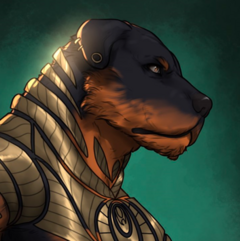 | |
| Nation State | The Ashal States |
| Ruler | N/A |
| Other Present | N/A |
| Languages | Ibeth, Common |
| Religion | Khama |
| First Recorded | 20,000 BC |
| Demonym(s) | Ashal |
The Asha are the oldest continuously existing Heritage on Aloria, even pre-dating the Elven Allorn Empire, though has undergone massive changes throughout history. Under the early Dewamenet Empire, the Asha were poised to conquer vast parts of the world, however, they came into conflict with the just-founded Allorn Empire. A cataclysmic war of Dewamenet Technology versus Allorn Magic erupted, which the Dewamenet lost. In their loss, Elven victory was so violent that it ground their Empire to dust. The Allorn Elves tried to move heaven and earth to erase Dewamenet Culture from existence, through the periods now referred to as the Pearl Wars though try as they did, they could never suppress the resistance and spite of the Asha to survive and thrive. When the Allorn Empire collapsed under its weight during the last Void Invasion, the Asha reclaimed some of their lost homeland, and are now poised to reconnect with much of their hidden past, rejoining long-lost brethren and refounding a common identity.
Design
The Asha are a collective of anthropomorphic animal-people, the closest approximation of a "Furries" on MassiveCraft. A wide range of animal types are available, from canine to equine to feline, to marsupials and more, with some species classified under separate Lineages (see below). The Asha can have plantigrade legs and feet or digitigrade legs and clawed feet and hands. They can have a wide variety of natural eye colors, as well as natural fur or feather colors and patterns, but there is a great deal of freedom to change, for example using leopard fur patterning for a canine-otter hybrid design. Some unnatural colors are also available to some of the Legacies. It is important to also mention the Half-Asha, who the Asha consider full members of their societies. Half-Asha are Asha born from dominant Asha parentage that show Asha traits. Common appearances are for example animal-like eyes, ears, claws, tails, and legs, but mostly without fur covering their skin.
Cultures
Asha are divided over four so-called Lands which loosely determine their cultural associations and beliefs. This is an important choice for most Asha (though many are born in them) because it defines their outlook on life, and most notably how they interact with Elves and Mages. Historically Elves and Mages have inflicted a lot of pain and suffering on the Asha, and so the Cultures define how they act around Elves, and how they treat Mages. It is possible to change Cultures throughout Roleplay, but choosing one is recommended when beginning a new Character so that others understand how they feel about certain topics, without the Character having to explain complex and potentially nuanced points of view for every Asha they meet.
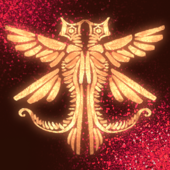 |
Deshret which loosely translates to the red land, are Asha unified in their hatred and search for justice for the pain and historical trauma their people have suffered by the Elves. Deshret Asha can be found all over the world, but most numerously among the Corsair Fleets and Naval Nations, populations of Asha without a true homeland to call their own. Deshret Asha can be expected to always express hostility towards the Elves, and anything related to the Allorn Empire or Oblation Magic, often being at the forefront of the breakdown of this dark institution in the Empire, or agitating for the Regalian Empire to go to war with the Allorn to crush them. Deshret Asha always remember their historical suffering. |
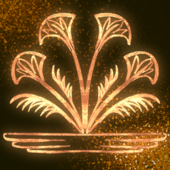 |
Hedjet which loosely translates to the white land, are Asha who acknowledge the historical suffering of their people at the hands of the Allorn, but who are mostly content that the age of the Pearl Wars is over, and that they can live in relative security without being repeatedly invaded by Elves. It is not unthinkable they might befriend Elves, especially if those Elves have no real connection to the Allorn Empire, or clear descent from those who benefitted from the murder of their ancestors. Hedjet Asha mostly hail from the Ashal States, where they focus on the rebuilding of their legacy and history and customs, while some of the newly born generations even barely know what the Pearl Wars were about. Some might deride the Hedjet for being tone-deaf, but they might be quick to retort that endless cycles of violence are self-perpetuating, and self-immolating. |
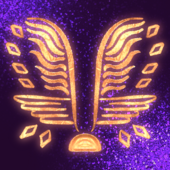 |
Neferu which loosely translates to the beauties or the beautiful land, are largely tolerated by the Deshred and Hedjet Asha, but regarded with suspicion. While the art of Magic is never in itself evil according to modern Asha attitudes, having Magic means a Mage can always hunger for more Magic and more power. In such a case, a Neferu Asha Mage is only a few steps away from calling upon the dark arts and using Oblation Magic as a means of self-empowerment. The Neferu mostly hail from the Silontaar country, but have populations in many nations, even those who have found acceptance in the Allorn Empire given that the Pearl Wars have ended. Their inaction and distance from the Pearl Wars, is still an ongoing sore spot for them, however. |
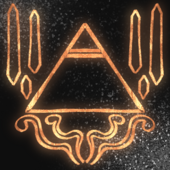 |
Kemet which loosely translates to the black land, are nearly universally reviled or feared by the Deshret, Hedjet, and Neferu. They include three distinct populations. First Asha who have abandoned their cultural heritage and started worshiping Evolism. Second the Asha who have gone mad with grief and become death cultists who worship the death gods and thus also embraced Death Magic. Finally, there are the Mystech who were once Asha, having been ripped from the land of the living or their Dewamenet afterlife when the old Khama God stole the afterlife, and used it to invade the Evolist pantheon. In doing so, he became a Void God, but all Asha who joined him or were taken there became Void Spirits. Kemet Asha have a complex and often hostile relation to all others because they are disconnected from the modern world. |
Heritage Traits
When designing a Character, Proficiency Points allow for a limited Ability selection with Point Buy Packs. Heritage Traits adds free Packs and Mechanics on top of that to help with cultural themes. Free Packs grant Abilities usually, while Mechanics change the way a character functions in Roleplay through subtle, and usually out of Combat ways. In essence, Mechanics just add aesthetic flair that invest in the niche of each culture. Free Packs never raise Proficiency Points, but the character must be able to purchase them normally. (ex. if a character is a certain Affinity that locks them out of a category, they cannot take that specific free pack and must choose the alternative option.) If a Free Pack grants Magic of some type, that Magic can be of any Alignment the character can normally choose, or limited to a select alignment, which will always be written in the Free Pack description. Mixed Heritage characters (i.e. characters born from two parents of different Cultures) may take one parent's 'Free Packs' and mix and match up to 5 Mechanics from both parents, although some Peoples cannot produce Mixed Heritage children (due to Magical/Fantasy reasons). Half-Asha must still choose a Lineage to be matched with, and can only pick and choose Mechanics from that Lineage.
Free Packs
- Asha can choose 1 Pack from any Category for free. If any magic is chosen, the player may choose an Alignment between God Magic, Exist, Ordial, Void, and Dragon Magic.
- Asha can choose 1 non-Ability Pack that is not Magical or Religious in nature. Non-Ability Pack means that it must be a Pack that does not give a Combat Ability.
Lineages
There is a great deal of physical divergence among the Asha, though four major Lineages are considered categorically similar. While all Asha receive the same Free Packs, what Mechanics they receive is dependent on the Lineage they belong to. This choice cannot be changed, and is also relevant to determine the physical characteristics of the Character. It is possible to be a mix of Lineages, but only one Lineage must be chosen for Mechanics. Lineages have no bearing on Cultures, a Remet Asha can belong to Kemet or Deshret culture, and so on. Some caution should be exercised with Silontaar Lineage however, as while they could in theory claim to be Deshret Asha, because they are biologically Magical, other Deshret Asha may reject them.
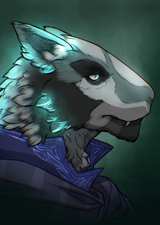 |
Silontaar Asha |
|
Mechanics
|
Language and Naming
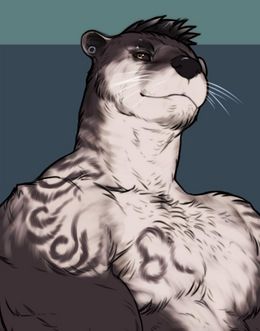
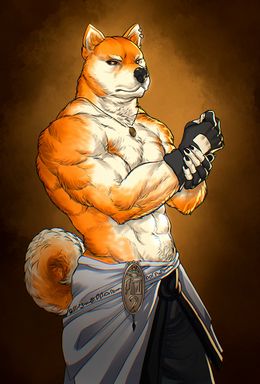
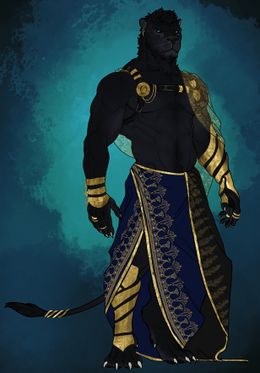

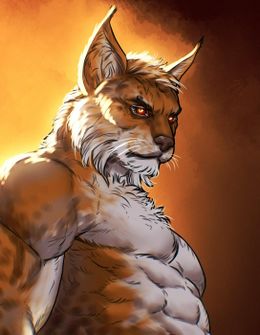
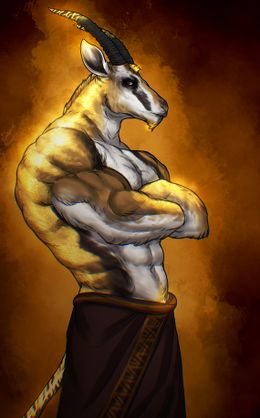
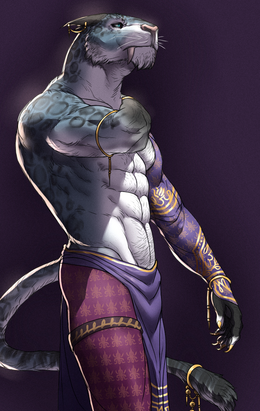
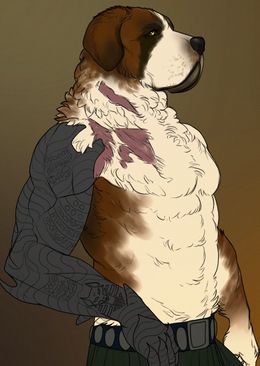
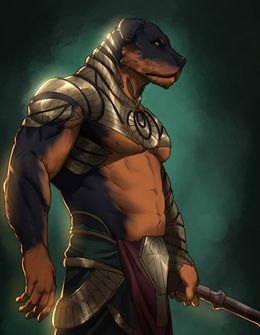
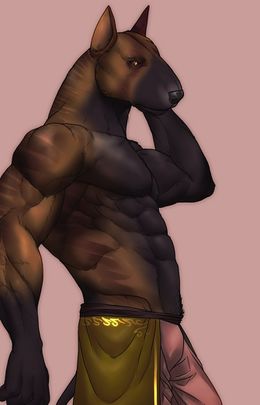
The Asha speak a language called Ibeth which is based on real-life ancient Egyptian. However, it should be noted that because Ibeth is considered a reconstructed language from archeological evidence, it is an incomplete language, and takes a lot of loan words from Common (English). Also, because it is a reconstructed language, not all Asha naturally speak Ibeth, as it is only really taught in the Ashal States and the Corsair Fleets. Most Asha who are born in Regalia never learn Ibeth, and more commonly speak the other languages of the Empire. In terms of naming, Asha similarly either have modern Ailor names or Elven given names depending on where they were born, but many Asha have also started embracing Ibeth naming practices. Based on ancient Egyptian, these names can be complicated, because most online resources just re-iterate the names of priests and pharaohs without discussing the names of the common people. Here are some examples of how to construct Ibeth names with the information we have within the lore.
Khama-Based Naming
Khama-based naming refers to a common habit for a person to be called "Son of X" or "Made of Y". These are honorifics given at birth and end up being used as first names, but can also be adopted at a later point in life to honor a specific God of the Khama Pantheon. Even Asha who are not Khama faithful can have these names because the Khama Gods doubled as divine individuals as well as secular rulers of the Dewamenet Empire. It is also common for Asha in the Regalian Empire to have both a Khama-based name and a more common name used among non-Asha like a nickname. This naming process is complex and requires a lot of trial and error. If you need help, you can make use of a [spreadsheet] we have provided to simplify the process or inquire in a ticket. Common name prefixes are Sahu (spiritual body of), Sa or Si (son of), Sat (daughter of), Mose or Mes (born of), or Menkau (established in the soul of). Then, either the first or last syllable of the Gods is used to compose names, for example for Tjafar, these would be "Tja" or "Far", while Ra-Mut's syllables would be "Ra" or "Mut". Names can either be single words or have a hyphen (-) to separate the syllables. Thus, finally composing a few name examples:
- Sahutja would be "the Spiritual body of Tjafar"
- Sat-Kha would be "the daughter of Khannar"
- Menkau-Ra would be "established in the soul of Ra-mut"
- Narmose would be "born of Khannar", except the syllables are switched around.
- Rasa would be "son of Ra-mut", except the syllables are switched around.
If you need help composing a good name, please make a Ticket. It is perfectly acceptable to source names from the internet, please just try to avoid naming your Character Imhotep or Rameses or Tutankhamun, or such familiar names from historical people. Generally speaking, you should prioritize names that are easy to pronounce and not too overcomplicated long, while feeling unique to your character. Surnames are not common in Ibeth, though a frequent way to identify someone is by using the "of placename" suffix. This can either be existing cities in the Regalian Empire (or even Regalia), but is more commonly cities in the Ashal States, of which here follows a short list: Akhiza, Siwakhet, Nasar, Lunet, Lahun, Per-Wadjet, Tjebu, Zwajet, Akhet-aten, Bukhama and so forth.
Brief History
The Lost Era
The Lost Era defines a period during which the Asha referred to themselves as Dewa, based on the state name Dewamenet. As Dewa, the Asha were the preeminent Empire of the time, with high technological progress, though recent archeology and events in Regalia implicate the Empire as being tyrannical towards its neighboring people, and even to its subjects. What little is known of this Empire, was that Magic was strictly banned and any born Mages were killed. This Empire's technology was seemingly steam-based, and had some advanced knowledge of electricity and conductivity as well as battery-powered factories, with machines building vast cities and operating complex irrigation systems. The Empire frequently invaded neighboring countries to enforce their anti-Magic policy, which eventually led to conflict with the rising Allorn Empire. This Dewamenet-Allorn war became all-defining for the next 15,000 years, as it destroyed the Dewamenet Empire, the near total destruction of the Asha, and the rise of the Allorn Empire as the undisputed magical hegemon of the world.
The Dark Era
The Dark Era defines a period during which the Asha were reeling from the destruction of their Empire, and the loss of the vast majority of their population. The magical event that the Elves used was described as a terrible climate shift in the region that was so strong, that it has lasted to this day. It was as if the Gods of the Elves decreed that all moisture or liquid would be deprived of every living and unliving thing in the Empire, drawing it closer to the frontline of the war. In essence, all moisture was drained from the heartland of the Dewamenet Empire and forced into a small strip of land that would later become known as No Man's Land, an impassable jungle with impossible high humidity. The entire Dewamenet Empire's core heartland became an unlivable desert in a near instant, all machines ground to a complete halt because of a lack of water to fuel steam power, and the batteries ran dry. All living beings died as their body was deprived of moisture, and those lucky enough to survive eventually died from thirst in this endless wasteland. The cities were eventually buried under the sand, and much of the heartland forgotten. It is said by the Kemet, that in the split second before this event occurred, Gahan stole the Khama Afterlife, and the capital of the Dewamenet Empire with it, killing all its inhabitants and turning them into Spirits while seceding into the Void to render the remaining Khama Gods incapable of doing anything about it.
The Pearl Wars
The worst period in Asha history, which spanned up until the Cataclysm, was the Pearl Wars, so named because of its relation to the Oblation Magic used by the Elves. How the Elves learned Oblation Magic is unclear though some rumor it was the Death-Goddess the Charnel who taught them. Oblation Magic involves capturing the soul of a dead person who cannot pass into the afterlife, eviscerating their soul, their memories, their emotions, and their feelings, and congealing into a single pearl of magical potency. This pearl could then be used to amplify the Magic of those who held them, and they suddenly came in massive demand in the Allorn Empire. Vast armies of Elves ventured into the blasted wasteland that was once the Dewamenet Empire, to capture the defenseless roaming souls of the dead Dewamenet citizens, using Oblation Magic to kill them one final time and use the remnant of their souls as nothing but vulgar fuel for their own internal Mage-Wars. When the Elves ran out of Dewamenet Souls to consume, they ventured out to the hinterlands where the Asha had survived. The Dewamenet Empire was vast and had many lands outside of the modern-day Ithanian heartland, and so Elven ships ventured beyond the high seas in search of these ex-Dewamenet colonies that still had Asha in them. They would find them far afield from the Ashal Islands (which were subsequently abandoned) to Nordskag, the Regalian Archipelago, and even Hadar where some Dewa had fled to hide. Their cyclical raids became a near five-yearly occurrence, where they would inflict death on the local populations, and then harvest their souls to produce more Oblation Magic Pearls, to bring back to the Allorn Empire to help amplify their power. These raids were filled with such mockery and cruelty, with the Elves making theatric displays of their arrival and heralding the supremacy of the victors over the vanquished. When the Asha speak of their historical trauma, it is this period, even if there are no Asha left alive today who experienced the Pearl Wars first hand.
The Pearl Wars ended when the Cataclysm struck. Due to the complexity of Oblation Magic in being a combination of potent Ordial Magic and Exist Magic, the world was no longer capable of sustaining the kind of Magic required to produce these pearls. Secondly, the Cataclysm provided enough of a momentum that weakened the Elven gods to the point that the Khama Gods as few as there were left, felt emboldened to reveal themselves from hiding. They quickly conspired to produce a pseudo-afterlife called the Duat, which in reality was nothing more than a waiting room for an actual afterlife that is believed to be dull and in a state of non-consciousness for those inside it. It did, however, remove the precondition for Asha souls to have Oblation Magic inflicted upon them, as it gave them an afterlife to have their souls pass into, thus denying the Elves the ability to snatch them. The Allorn Elves and Allorn Revivalists take no responsibility for the suffering of the Pearl Wars, indicating that they believe this was simply the plight of the conquered, insisting that the Asha would have done it no other way if they had won the war and discovered that Elven ears could be used as fuel for their machines. The Wars were so historically significant because they continued for thousands of years on a cyclical 5 or 10 year basis. The sheer population growth stunting that occurred because of it means that the Asha are still not numerically comparable to the Ailor or Elves to this day, despite being older people than both. Oblation Magic Pearls have largely disappeared from the world, though rarely, one might still encounter these ancient magical objects, always betrayed by their sickly green and blue glow, and a distinct hunger they encourage in anyone who lays eyes upon them, even those who deeply revile these objects.
The Light Era
The Light Era defines the post-Cataclysm period during which some of the Asha have started re-settling the lands that were previously depopulated by the Pearl Wars. The most notable of which are the Ashal States off the coast of the former Allorn Empire (now Ailor colonies). Asha have populated nearly every known continent with some even daring to live among Elves, while far flung populations like the Savent and Silontaar have been re-connected with the wider Asha population after millennia of isolation away from the Pearl Wars. Some Asha even, have resorted to an exhaustive mission of revenge referred to as the Claw Wars, a mockery of the concept of the Pearl Wars, by which the Asha Corsair fleets raid coastal Elven settlements. Unlike the orchestrated and theatric Pearl Wars however, the Claw Wars are just disorganized revenge killing because it feels good to them, a fact that makes more than half the Asha population quite uneasy with the brutality of the Corsairs. Regalia has since become a hub for Asha-Revival, with knowledge both being freely shared and discussed, and potentially being suppressed and silenced to ensure the Asha do not grow too confident in their desire to re-build their Empire.
Religions
- Khama The most obvious and majority religion for the Asha is Khama, which was once an ethnoreligion for them but is slowly being rediscovered to be so much more and inclusive of other peoples.
- Unionism is the second most common Religion for Asha, especially those born in the Regalian Empire. The Asha are represented by Asha Gods in the Unionist Pantheon, which makes it very appealing.
- Estelley Any Asha who worships Estelley is deeply, deeply strange. Estelley as a religion was used to empower the genocide of the Asha, and is an Elven ethno-religion, so there is no compatibility.
- Fornoss There are some Fornoss Asha communities, particularly in Nordskag where some Asha communities survived throughout the Pearl Wars, and integrated with the Fornoss Ailor, but abandoned Khama.
- Evolism Evolism is a surprisingly common religion among Asha, especially those who court the Dark Gods for powers to take vengeance on the Elves, or just support Gahan and his Dream-Dewamenet.
- Draconism Draconism does not have a strong Asha representation in it, but Asha can be Draconists if they resonate with the dogmatic virtues or mechanical themes of world-creation in Draconism.
Asha and Magic
The Asha do not universally hate Magic. There is perhaps a common understanding among them now, that it was largely their extremist purist policies that led to the destructive Dewamenet-Allorn War, and subsequent Pearl Wars. The majority of the revulsion of Asha concerning Magic is aimed at the seductive power of Magic can lead one to justify and commit great evil with a few simple hand gestures. A fire mage himself is not distinctly a problem (though there would be many Asha with knee-jerk hostile reactions even at the sight of any Magic), but said fire mage's desire for ever bigger and hotter fire. Eventually, he would simply run out of his own body or soul's capacity to draw enough magic from the respective realms to cast. In such a case, the fire mage would seek other ways to empower their Magic, which to the Asha is a downward spiral that ends in Oblation Magic. While Oblation Magic became impossible after the Cataclysm, there have recently been signs that it has once again become possible with select rogue Allorn Mages experimenting with Oblation Magic, and worse, it has become cast-able without the need for that person's soul to be denied by any afterlife. Oblation Magic has evolved, and so too has the vigilance of the Asha evolved from a continual purist hate of Magic to a suspicion and paranoia, that any Mage could at any point in time be seduced by the cheapest and easiest but most violent route to power without bounds. There are, however, still many purist Asha who are completely in agreement with the Lothar, though they are generally considered quite radical.
Asha and Elves
The attitude of the Asha, especially those who care a lot about the Pearl Wars history or their revulsion against Oblation Magic, tends to project itself onto the Elves as a whole. The Asha are taught for decades, in every school, in every nursery rhyme, and in every story re-telling of the Gods or the priests or even just their distant family's history, that the Elves are without moral and without value for life. They are taught from the day they are born that Allorn society carries within it a cultural darkness fostered by Talea the greatest killer in history, that justifies such indifference to the suffering of others. There are many Asha who learn that some element of this is exaggeration or a hypocritical form of bigotry born out of fear of otherlings. Many Asha who come to Regalia are predisposed with an inability to see Elves as real people, but rather see them as Demons, and many struggle to overcome years of cultural indoctrination, to treat Elves as equals. We encourage Players to play with the concepts of taught hatred, and learned growth, and see the potential for character development as Regalia's melting pot cosmopolitan culture allows their Characters to see the historical nuance and complexity of the individual, but Players are also more than welcome to imply in their backstory that their Character already overcame this historical conditioning.
Culture
This section covers Remet Asha Culture as it was known from rediscovered or surviving customs from the Dewamenet. There is overlap with the other Asha Lineages, but niche cultural habits like fashion are discussed in their Lineage Expanded lore further below.
Fashion
Asha clothing is often very simple in its application of garments yet rich in texture and patterning. Beyond a simple chest cloth worn by women and leather straps worn by men to attach objects to, most Asha rarely wear any clothing on their upper body when they don’t seek a reason to blend into other societies. On their lower bodies meanwhile, all wear a so-called Satoor, a dress-like clothing piece often in earthen or burgundy color tones with a variety of intricate patterns in vibrant colors that spans from the waist to the ground. These Satoors are often specially tailored to allow a tail to protrude from the back, and also have individual cuts on the front and sides to allow a free range of motion for Asha in combat. The Satoor is, in fact, a crucial piece for many cultural traditions of the Asha. As part of decoration for the Satoor, high officials may also wear shoulder capes or shoulder pelts from regional bovines. Jewelry is also a very much prized accessory for all genders of Asha, with numerous necklaces and ear piercings being the norm in adults. The Asha recognize the difference between a civilian Satoor and a combat Satoor in that combat Satoor cut off at the knees, while those for civilians end at the ankle or a bit higher. The Asha also have a fabric that was once unique to them alone, produced by the coastal Asha which has since expanded world-wide. Elastan, a form of lycra, is made from natural blue threads excreted by a unique coral species. The fabric is inherently liquid deterrent, and Elastan clothing made by the Asha usually covers their arms and shoulders, as well as their legs and waist, but does not cover their torso. Elastan was eventually also mixed with other fabrics, creating Peltastan, a form of wooly spandex. It has properties similar to those of Elastan, being form-fitting and soft, but Peltastan is not water-repelling. Peltastan clothing is usually worn on the torso and upper leg area, while a half-Satoor is worn over it like a battle skirt, often with shoulder pads to boot. Such pads are often light and decorative, as Asha effectively do not wear armor, in order to benefit from their superior agility over other Races. When protection is required, Living Metal is capable of forming a quick, sleek coating for their defense.
Mannerisms
Mannerisms are small niche behaviors Asha might display in Roleplay that enhances their themes.
- Asha tails are immensely important, both physically and culturally. They are considered a deeply personal extension of the mind, with touch being extreme taboo without permission.
- Tails can also be used to indicate intent. Tails aiming up can be a sign of intimidation or taunting, tails swaying can be a sign of approval or liking something, while tails wrapping around legs can indicate fear.
- Tails can also be used to touch others, which is considered an intimate gesture. A tail coiling or stroking someone else's leg is considered a very forward non-verbal flirtation.
- Most (but not all) Asha use a form of guttural sound for communication also. Growling, and purring, though not barking, are part of the vocal routine of most Asha when indicating pleasure or displeasure.
- Pulling or cutting an Asha's tail is considered an extreme insult. Tail cutting is a common practice among those with bigotry towards the Asha, with Asha seeking to replace lost tails with living metal.
- Asha treat half-Asha as part of their culture, so long as they have made an effort to be part of Asha culture. Half-Asha who belong to other cultures receive apathetic responses from full Asha.
- Asha transition between bipedal and quadruped movement for a variety of reasons, for example while vaulting over things, or while crawling under obstacles, or to move around faster.
- Asha dress style is very much non-gendered. All genders wear the Satoor (a half-dress with a parted opening on the side), while female Asha may opt for a chest binding if it is culturally appropriate in Regalia.
- Asha are highly sensitive to the killing and eating of members of their people, as Khama holds that people who are refused by the afterlife, are reborn as wild animals in Aloria, such as lions or dogs.
Expanded Lore
Expanded Lore exists to apply more content to the Savent and Silontaar Asha, whose culture differs from the Remet Asha mostly discussed on this page, as well as other concepts that may be relevant to Asha roleplay or deep-lore exploration. This section is optional reading, though if you play a Silontaar or Savent, reading at least their sections is encouraged.
Gahan and Kemet
Gahan and Kemet are some of the recently most complicated aspects about the Asha experience. Gahan was once a god of the Khama pantheon, but under mysterious circumstances left said Pantheon, taking the Dewamenet afterlife with him, and breaking into the Void. While doing so, he used the Dewamenet afterlife and all the souls within as an army to effectively conquer a part of the Void, and crown himself Spirit Emperor, with all Void Spirits obeying his will one way or another. While the Spirits still wage war on one another, Gahan rules over the divided chaos absolute, and his Kemet Demons have a special role to play in his keeping the Dewamenet Dream alive in Kemet. Kemet refers to the Black Land, the name the Asha have given to this material afterlife that now exists somewhere between the real world and the Void. They consider it a black land, because anytime anyone has had visions or dreams of the place, it is always represented by a glowing black obsidian pyramid, in which Gahan sits on his throne keeping a fragmented memory of the Dewamenet Empire alive in the afterlife. In essence, while the Dewamenet Empire was destroyed, the capital and the afterlife merged and become one place, which was then tainted by the Void, though it did keep many Dewamenet alive for eternity while the rest of their Empire crumbled.
Gahan's Spirits in turn, are also playable. When designing a Mystech Character, it is recommended to paid Gahan loyalism/an Asha inspired Spirit as an Unbound Spirit. Gahan has several lieutenants, most important of which are the cruel and wroth commander Senetaph who leads the military legions of Kemet, Satjaraf-en the administrator who keeps the historical records of the Dewamenet and Kemet, and Barubast the shipwright who controls the access point to Kemet and ferries souls in and out on the black river, a proverbial magical gateway. While these Spirits should always be played with immense trepedation to reveal any information about Kemet (because we cannot logistically reveal deep lore to only part of the player base), these Asha Spirits should endeavor to be pro-Asha and reasonably align themselves with the Asha community in Regalia, despite its potential opposition to their presence or public cooperation. For better or worse, Gahan's Spirits are a window into the past, and their master despite being corrupted by his lust for power in the Void, still holds a dear place in his heart for his people and their plight, and so many of Gahan's Spirits are exceptional Elf-killers and tricksters.
Both Khama as a faith, and Asha society culturally speaking, have a complicated relation with Sprits. Spirits were not overtly used to torment the Asha during the Dewamenet war or subsequent Pearl Wars, but are inherently made of dark Magic, the stuff that was used to murder their kin. Spirits are unaccountable and unpredictable, and their pro-Asha attitude (at least for the Gahan Spirits) is at best fickle, with a Spirit perhaps deciding to murder some Asha it does not like out of boredom or a desire to consume its soul. Still, these Spirits can provide invaluable assistance or information to the cause, and even those who do not consider themselves part of the Kemet Asha cultural Land, might indulge in a bit of Spirit summoning or bartering just to get an edge on the Elves, who still have the upper hand because of their Magic usage.
Savent Asha Expanded Lore
Savent Asha would almost be considered an entirely different people by outsiders, but they are most certainly Asha, and hybrids of species-appearances between Savent and other Asha are part of their heritage too. The Savent Asha descend from a group of peoples that objected so violently to the war between the Dewamenet Empire and the Allorn Empire on the principle of non-aggression and not hating Magic, that they left the Dewamenet Empire in search for lands far away from either Empire, or Empires as a whole. The Savent at the time believed that violence was an inherent quality of Empires, and as such, people should avoid creating large geo-political powers. They settled in a largely (by Regalia) unmapped continent north of Guldar called Qelis, a temperate lake-rich land where the Savent have established 231 smaller Kingdoms and Republics that all live in perfect harmony, but are equally rather poor when compared to other countries around the world.
Savent Asha are without exception, either fully Avian Asha (think Eagle, Raven, Hawk, Owl), or a hybrid between Avian Asha and mammalian Asha (for example, an eagle face with long dog ears and cat lower legs but an Avian upper body and tail). All Savent Asha have beaks, and all of them have avian forearms and claws, while some of them have wings including regal plumage. Savent Asha are otherwise physically similar to other Asha and Asha Lineages, except that they will a visual niche that is not existent in any other heritage or culture, bar from perhaps the avian (Maquixtl Genos Form), who fall squarely in the terror-bird category only.
The major difference besides appearance niches between Savent Asha and all other Asha, is that their psyche is in essence completely devoid of all trauma that many other Asha suffer from when looking at their history and the state of their people across the world. While there certainly is empathy and pity for the Pearl Wars, there is an equal yet soft-spoken sentiment among the Savent, that the Dewamenet got what they deserved because of what they tried to do to the Elves. The Savent rejected the Dewamenet-Allorn War in all its senseless brutality (from their perspective), and deem the outcome to have "occurred in equal measure onto the Elves, to be fed to the Dewamenet Machine as fuel". Many of them in essence claim, that whatever hardships would have befallen the Asha, would have been inflicted onto the Elves if the Dewamenet had won, and that this is not a unique victimization of the Asha, but rather a sign of the more widespread depravity and hubris of Empire-politics. A particularly sore topic for those who have to hear the same sentiment as an excuse, from an Elven Allorn Apologist.
That is not to say that all Savent think that the Asha "got what they deserved", there is always a very fine line to walk between being genuinely empathetic towards the historical suffering of the Asha, and finding the right time to discuss the causes and implications of the actions of the Asha forefathers. The Savent insist that the Dewamenet were far from innocent, and engaged in equal measure of genocide as the Elves did, it just so happened to be the case that the Elves did it better (and faster). Savent can be genuinely included in interest groups who seek to discover more of their lost historical heritage and have very real passion and emotion towards the rediscovery of lost information. There remains however, the concern from other Asha, or the thought in the back of one's mind, that a Savent is only there out of recreational reasons, and can never fully understand what it means to re-discover a culture that was so violently destroyed by the conqueror. At the end of the day, Savent can return to their own unique culture that has flourished independently from a desire to return to the old Dewamenet.
Savent Culture is based on real-world Achaemenid period Persia Minor cultures (such as Lydean and Phrygean or other Anatolian Cultures of that period). However, because there is no real linguistic survival from this period, we use Achaemenid names for the people, but still use Ancient Egyptian as their language. Despite their cultural deviation, the Savent have held onto Ibeth, as well as Khama as a religion, even adopting the more modern interpretations as die-hard belief in their faith waned over time, and they had to ironically resort to the diluted oral survival of the captive Asha to fill the gaps. The Savent are a culture with a very strong emphasis on metallurgy, particularly working with noble metals like gold and silver, which form threads throughout their other customs and traditions. Music is for example also important to them, with several instruments being credited to their invention, and always finely decorated with in-laid gold and silver threading.
Savent clothing is far simpler when compared to the Asha Satoor with its complex patterns, relying more heavily on the opulence of all that sparkles yet having very vibrant but simple patterns. The Savent tend to lean more in the direction of pacifism or at the least non-violence, vowing only to act in self-defense. That being said, Savent can be ferocious fighters, especially with their sharp beaks and talons, and several Savent arena fighters have gained fame in the Regalian Empire for their ruthless tactics in the ring. The Savent have a more cultural streak than the other Asha, enjoying the finer things in life, and attaching less value to status symbols and vanity. It should be noted, that the metals that the Savent work with (and can create with their hands) are not actual Gold and Silver, but imitation metals like Electrum, which is why having a Savent friend is not a get-rich-quick scheme.
Silontaar Asha Expanded Lore
Being reworked during the Khama Update
Gallery of Art
Asha are really cool and awesome, and lots of art has been made of them.
-
The Satoor is technically a dress, but appears more like stylish fabric with a lean fit.
-
Asha prefer to go shirtless, though can also wear Ailor clothes in case they want to fit in.
-
Asha can get really really big, if they put in the work.
-
Not all Asha have to be muscular tanks, unlike what this Wiki page may imply.
-
Fur painting to appear like tattoos are fairly common among the lower social class Asha.
-
Dewet Fashion means using ancient egyptian aesthetics to appeal to the old Dewamenet legacy.
-
Otter Asha are known to be energetic and fun loving Asha, even as Bound Asha.
-
Rodent Asha are less common, but nonetheless still good friends to have.
-
Elastaan is very popular as a fabric not only among the Asha, but also Regalians.
-
Rat Asha are fierce fighters, with many of them working as gladiators in Regalia.
-
Equally, other types of Asha are commonly found due to their ferocious fighting skills.
-
Even if the Asha look like predators, some still have a very calm and kind expression.
Trivia
- There is credible evidence to suggest that the Asha along with the Meraic were the second people to make it into the upper terrasphere of Aloria and install the equivalency of satellites in orbit, but all knowledge of how they did this has been lost to time.
- There are a total of sixteen Corsair Fleets in operation across Aloria, but five are most notable among their number. These include the Medes Fleet led by the unique dual leadership of Ladies Saalamun and Vasnaf, the Sefetjew Fleet led by Lord Kahnef or “Lord Demon-claw” and the Kheni-Hetef Fleet led by Lord Ammunakhonet, an Undead warrior who has led his fleet since it was created nearly three centuries ago.
- Asha are routinely subject to accidental racism in Regalia, either due to over-familiar expectation of animalistic behaviors or similarities, or because Ailor try to be comedic with them, and end up comparing them to domestic animals. Don't do that.
| ||||||||||||||||||||||||||
| Accreditation | |||||||||
|---|---|---|---|---|---|---|---|---|---|
|
| ||||||||
